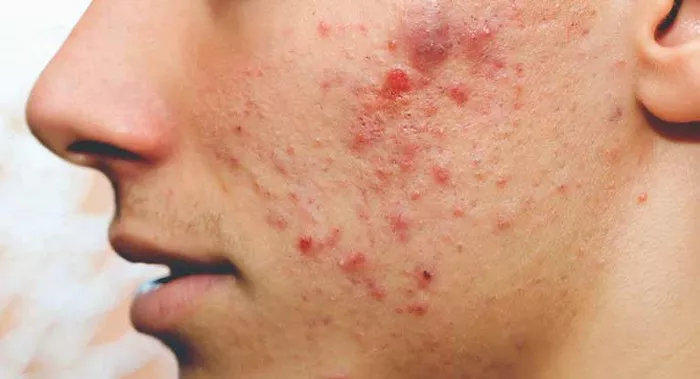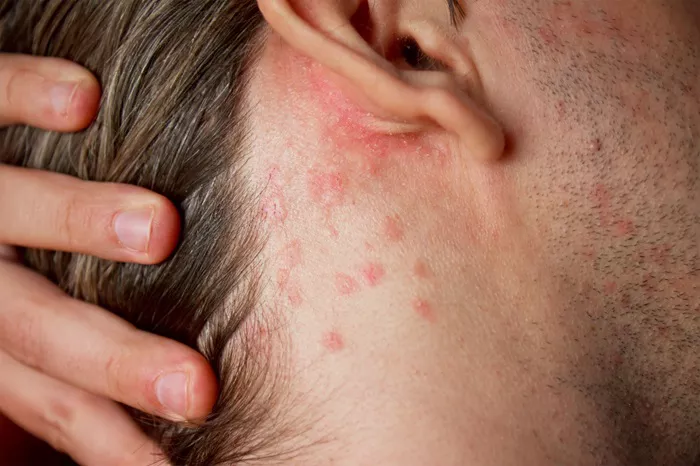Acne is a common dermatological issue affecting millions worldwide, but the marks and scars it leaves behind can often be a bigger concern than the acne itself. These remnants of skin battles—ranging from subtle discolorations to profound textural changes—can significantly affect an individual’s self-esteem and quality of life. This comprehensive guide explores the types of pimple marks, including post-inflammatory hyperpigmentation (PIH), post-inflammatory erythema (PIE), atrophic scars, and hypertrophic scars, alongside effective treatments and preventive measures.
Types of Pimple Marks
Post-Inflammatory Hyperpigmentation (PIH)
PIH refers to the dark marks or patches that appear on the skin after an inflammatory wound, such as acne. These marks occur when the skin produces excess melanin in response to inflammation, resulting in darkened spots that vary from light brown to black, depending on skin tone and the depth of the discoloration. PIH can affect all skin types but is more prevalent and persistent in darker skin tones due to the higher concentration of melanin.
Post-Inflammatory Erythema (PIE)
Unlike PIH, PIE manifests as red or pink spots at the site of healed acne lesions. This condition is caused by dilated capillaries under the skin, which result from inflammation. PIE is more noticeable on lighter skin tones and can be a persistent reminder of acne even after the original pimples have resolved.
Atrophic Scars
Atrophic scars are indentations left in the skin after acne or other skin traumas. There are three main types:
Boxcar Scars: These are round or oval depressions with steep vertical sides. Wider than ice pick scars, they resemble the scars left by chicken pox.
Ice Pick Scars: Deep, very narrow scars that extend into the dermis. The skin looks as if it has been punctured by a sharp tool.
Rolling Scars: Caused by damage under the surface of the skin, these give the skin a wave-like appearance due to their wide size and shallow depth.
Hypertrophic Scars and Keloids
These are raised scars that form where the skin heals after an injury. They occur when the body overproduces collagen, which piles up on the skin. Keloids are a more severe form of hypertrophic scars that can grow beyond the boundaries of the original wound and are typically very difficult to treat.
Treatment Options for Pimple Marks
Topical Treatments
Retinoids: These vitamin A derivatives speed up cell turnover and can reduce discoloration while smoothing the skin. They are particularly effective in treating atrophic scars and PIH.
Alpha Hydroxy Acids (AHAs): Glycolic acid and lactic acid are the most commonly used AHAs to treat acne marks. They exfoliate the top layers of the skin, leading to reduced pigmentation and a more even skin tone.
Vitamin C: Known for its antioxidant properties, vitamin C can help lighten PIH by inhibiting the enzyme tyrosinase, which is involved in melanin production. It also contributes to collagen synthesis, which can help reduce atrophic scarring.
Niacinamide: Effective in reducing skin hyperpigmentation, niacinamide works by slowing down the transfer of melanin to the skin’s epidermis.
Home Remedies
Aloe Vera: Known for its healing properties, aloe vera can help soothe irritated skin and may help improve collagen quality in atrophic scars.
Lemon Juice: Contains citric acid, which can act as a natural bleaching agent. However, it must be used with caution as it can cause irritation and photosensitivity.
Honey: An antibacterial and healing agent, honey is beneficial for reducing inflammation and aiding tissue regeneration.
Professional Treatments
Chemical Peels: These involve the application of a strong acid to remove the top layer of the skin, reducing deeper pigment and textural scars.
Microdermabrasion: A minimally invasive procedure that uses fine crystals or a diamond tip to remove the outermost layer of dead skin cells.
Laser Therapy: Targets various components of acne scars. For PIH, lasers can target pigmented cells to lighten spots. For atrophic scars, ablative lasers can remove thin layers of skin, while non-ablative lasers stimulate collagen production without damaging the surface.
Microneedling: Involves rolling fine needles over the skin to stimulate collagen production, which can fill in indented scars and improve skin texture.
Prevention Tips
Avoid Picking or Squeezing Pimples: This can push bacteria deeper into the skin and increase the risk of scarring.
Practice Sun Protection: UV exposure can worsen PIH by stimulating melanin production. Using sunscreen with at least SPF 30 can prevent dark spots from becoming darker.
Establish a Good Skincare Routine: Using non-comedogenic products and gentle cleansing techniques can help prevent acne breakouts.
Seek Early Treatment for Acne: Addressing acne early can reduce the risk of severe acne and, subsequently, the formation of scars.
When to See a Dermatologist
It’s essential to consult with a dermatologist for severe acne, persistent pimple marks, or before starting any new treatment, especially those involving potent ingredients or professional procedures. A dermatologist can provide personalized advice based on your skin type, the severity of the pimple marks, and your overall health.
Conclusion: Comprehensive Care for Lasting Results
Dealing with pimple marks requires a multifaceted approach involving prevention, timely treatment, and sometimes professional intervention. Understanding the type of scars you have and how to treat them can help you achieve clearer skin. Remember, each skin type is unique, and what works for one person might not work for another. Patience and persistence, coupled with the right knowledge, are key to managing and reducing pimple marks effectively.
[inline_related_posts title=”You Might Be Interested In” title_align=”left” style=”list” number=”6″ align=”none” ids=”7848,7805,7737″ by=”categories” orderby=”rand” order=”DESC” hide_thumb=”no” thumb_right=”no” views=”no” date=”yes” grid_columns=”2″ post_type=”” tax=””]
































